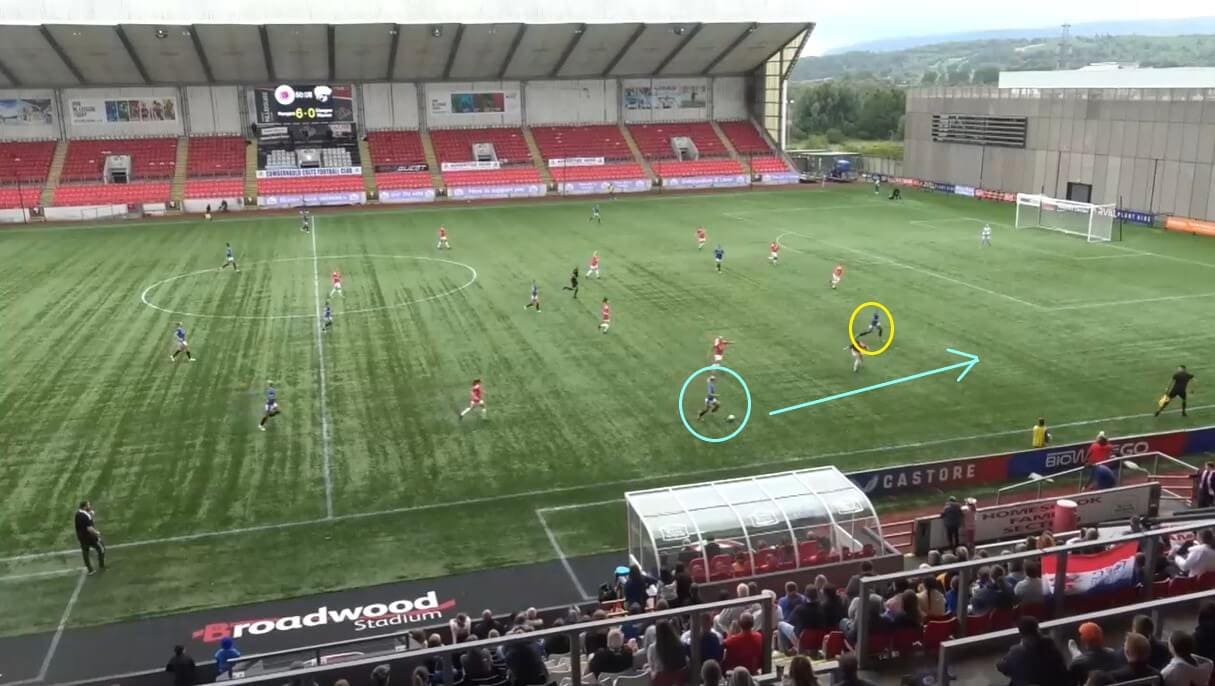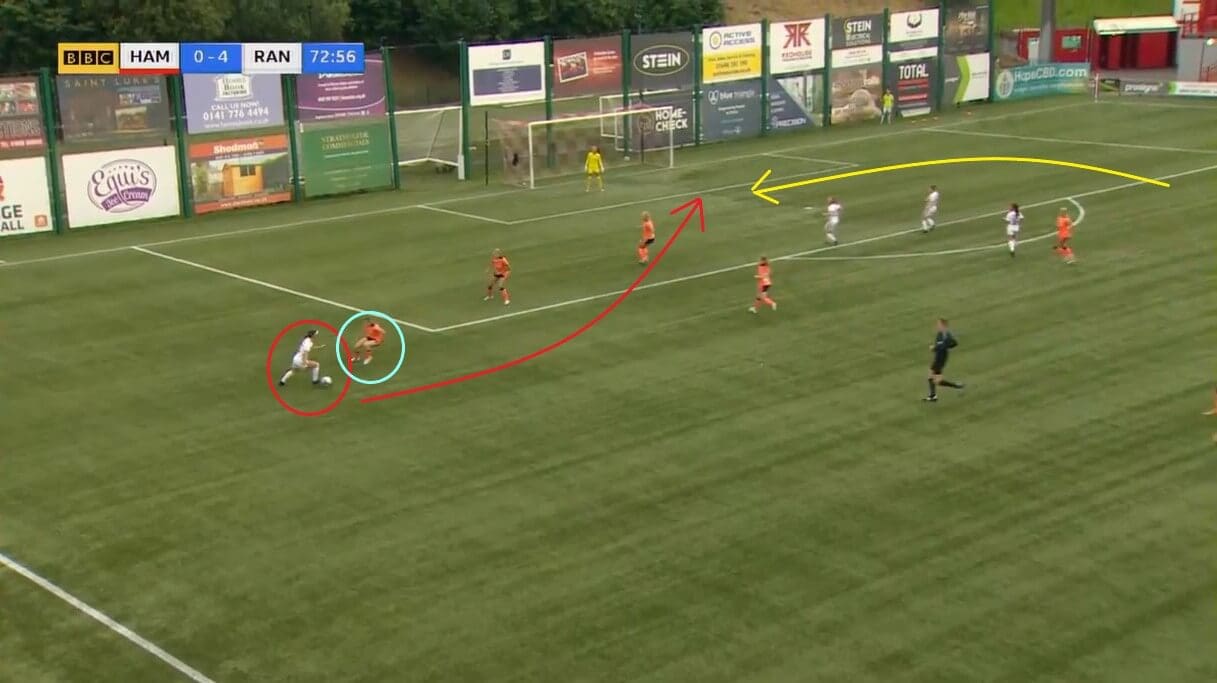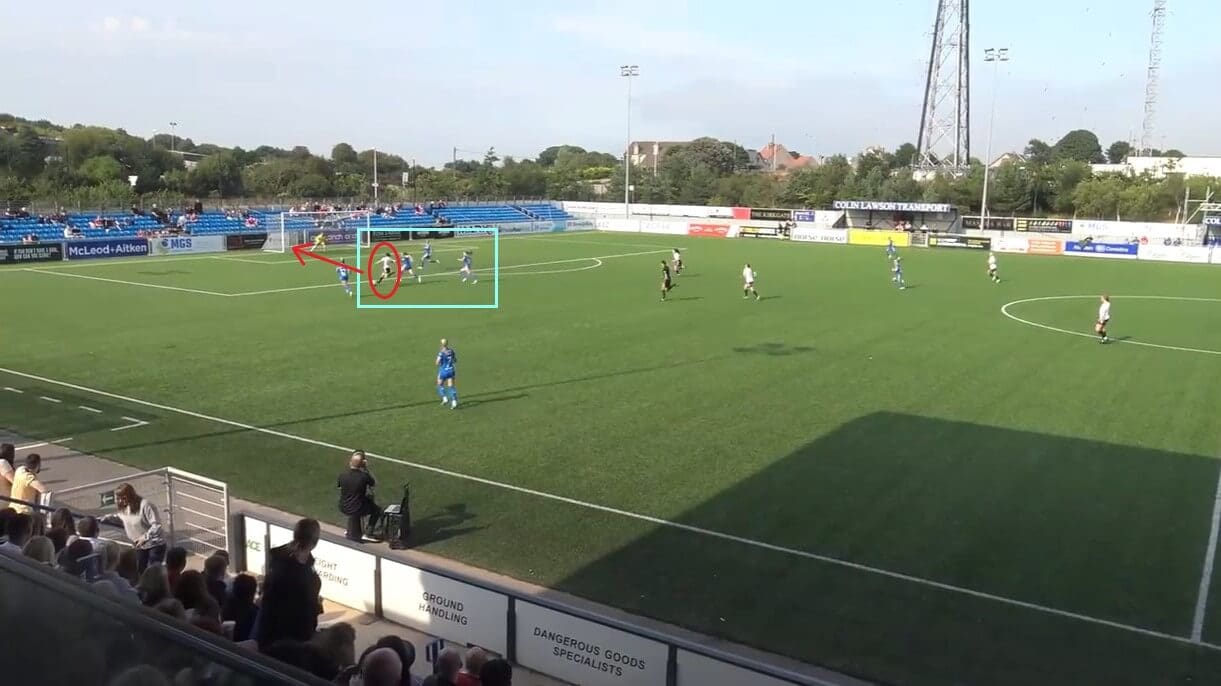There are many women’s football leagues around Europe that perhaps don’t attract as much attention as others, with fans understandably concentrating on major divisions like the WSL, Serie A Femminile, Liga F (as Spain’s Primera División will now be called), Division 1 Féminine and the Frauen Bundesliga. However, for those looking for a developing league in the women’s game to keep an eye on, the Scottish game is definitely worth the effort.
The current 2022/2023 campaign is the first since the league was taken over by the SPFL, with more teams added to both the SWPL 1 and SWPL 2 divisions since last season and more significant broadcasting deals signed in order to bring them to more people.
Last season was one of the most exciting editions of the SWPL in recent memory, with Rangers Women claiming their first league title and ending Glasgow City’s 14-year grip on the trophy in the process. Malky Thomson’s side have gained a reputation for playing attractive football that has proven difficult to break down, with 25 of their 27 games last season ending in wins, whilst the other two were drawn. They also netted a colossal 97 times in total, whilst conceding just 11.
As a result, there was plenty of excitement surrounding them in pre-season, with many hoping that they could maintain this high standard and be part of another closely contested title fight, and this tactical analysis will show why they have so far not been disappointed. The scout report will break down some of the key elements of their attacking and defensive play, focusing specifically on the speed at which they move the ball forwards, their pressing when out of possession and the many ways in which their defensive midfielder is central to their tactics.
Playing forwards
The first aspect of Rangers Women’s game to examine in this analysis is the way that they move the ball up the field, with many teams finding it almost impossible to prevent them from creating goalscoring opportunities, and there is no doubt that a lot of their current success is built on this.

It has become commonplace to see Rangers set up with a stretched defensive line when in possession, as is the case here against Hamilton Academical Women. By positioning Scotland full-backs Nicola Docherty and Rachel McLauchlan as close to the sidelines as possible, Rangers create width in attack and can move the ball around the pitch at speed, whether that is with a sideways or forward pass, giving them the best possible opportunity of progressing play and creating goalscoring chances.
However, whilst this is essential to their style of play, it is the two centre-backs who are worth looking at here because a lot of teams prefer to keep these players in their own half as a way of protecting against a possible counterattack. Rangers, however, like to have all ten outfield players in the opposing half, which is why Hannah Davison and French summer signing Lisa Martinez are so high up the field here.
The reason for this is that it enables the ball to travel around the pitch with more accuracy and speed, making it harder for the opponents to get across the field in time and close off the open spaces, and this is therefore a major point to consider when looking at why Rangers have been so potent in attack, with 29 goals scored in their four league games to date.
The impact of this wide setup on the forward line is also evident, as the two wide attackers now don’t have to stay as close to the sidelines and can instead move infield and work in closer proximity with the central striker, giving them a better chance of converting their opportunities. They also drop back at times from these positions, which both keeps the team’s balance and prevents the centre-backs from becoming isolated once the full-backs have pushed up the pitch, with Emma Watson moving back slightly here but then retaking her place in the line.
Therefore, looking at the big picture, this structure has been essential in helping Rangers to become such a potent attacking side.

Once the ball moves into the final third, Rangers’ focus then turns towards finding the right gap through which they can pass or shoot at goal. To assess where this is, players on the same side of the field link up with each other and test different areas of the opposing defence, with former Manchester United Women striker Lizzie Arnot passing into another summer arrival here, Finland midfielder Jenny Danielsson, before receiving the ball back instantly.
This might look like a simple one-two, but the key point is that it allows Arnot to receive the ball further inside and in a position from where she can look across the pitch and find a teammate. On this occasion, Arnot passes to McLauchlan, who then finds the back of Hamilton’s net from long range, therefore demonstrating again how Rangers’ success is built on players working together. They have an 84.5% passing accuracy so far this season, which reflects their desire to keep the ball and not rush things when in possession, and this is another reason that they have been so difficult to beat in recent times.

However, it is not only the ball that is kept mobile when Rangers have possession, because their players are also encouraged to move around the pitch and keep swapping roles during matches. In this case, in their league opener against Glasgow Women, winger Brogan Hay has dropped back to receive a short pass, with Danielsson moving forwards to take her place and give Hay a passing option when she turns to assess the spaces ahead of her.
The reason that players constantly switch positions is that it causes confusion among the opposing ranks, with them unsure of whether to follow one player or hold their position. As a result, Glasgow have two players in the same vicinity as Hay and Danielsson here but neither know whether to stay with the ball or close the Finland international off, and that indecision gives Rangers the extra second they need to control the ball and make the pass behind them.
Without this movement, it would be highly likely that whichever of the two Rangers players had ended up with the ball would have been cut off and forced to either give up possession or pass backwards, which is not something that Rangers like to do much of. Therefore, as well as keeping the ball moving around the pitch, the movement of their players has been a key reason for their recent on-field successes.
The defensive midfielder’s roles
When looking for one player that Rangers Women couldn’t be without, the defensive midfielder instantly comes to mind, because they assist in both attacking and defensive situations. The importance of the role means that only a few players are trusted to play it by Malky Thomson, which shows how everything Rangers do well comes from that position on the field.

More often than not, it is Scotland midfielder Sam Kerr (no relation to the Chelsea Women striker) who has the role, with her constantly taking up positions between her team’s lines and helping to move the ball around the field. In this case, with the ball in the possession of goalkeeper Jenna Fife, she is facing toward her teammate and ensuring that she is in a position to receive the ball if it comes her way.
The key thing to note about her position here is that she has time to control the ball, and that is something that anyone who plays in this role needs to have. They also need to possess a wide range of passing, reacting to what their opponents opt to do when the ball comes out of the goal area. In this case, three Aberdeen Women players opt to close her down, meaning that Kerr needs to turn and move the ball along the ground in order to maintain the accuracy of the pass, rather than risking anything and giving the opposition a chance to win possession.
In this way, the Rangers defensive midfield role is much like that played by new Barcelona Femení midfielder Keira Walsh, with both England and former club Manchester City Women relying on her ability to start attacks from deeper areas of the pitch and move the ball around as needed.

Having a good range of passing is also important when thinking about Rangers’ ability to switch tactics during the season. Keeping the ball on the ground was the best option here, but, in their opener against Glasgow, they wanted to take advantage of their opponents’ high back line and target the spaces in behind with long balls.
As this pass map shows, Kerr has the ability to move the ball around the pitch and across multiple distances, always looking for the best way to create attacking opportunities, and this is why she is often the one that Rangers deploy in this area of the pitch, with her individual qualities fitting her team’s preferred style of play.

It has been mentioned that Malky Thomson likes all ten of his outfield players to move into the opposition’s half when they have possession, and that means that the defensive midfielder needs to also be quick at moving around the pitch and not just be a good passer. Kerr is just as good at this part of the game too, and it is normal to see her positioning herself inside the opposing D, as is the case here, and doing the crucial job of sweeping up any loose balls that are cleared by the opposition.

As her heatmap for this season indicates, it is not a one-off that she moves into these areas of the pitch, and the fact that she constantly gets herself into these positions means that the rest of her team can focus purely on winning the ball in other areas of the field and not need to rush back to start second phases. Therefore, again, the defensive midfielder is a vital part of the team and has been vital to Rangers’ ability to be so productive in the final third.

The defensive midfielder also needs to have a strong bond with the defensive line and be able to react to what they are doing, and it is common to see these five players working in close proximity to each other and almost forming a separate unit on the field.
In this case, against Hearts Women, former West Ham United Women player Tessel Middag has moved up the pitch with the ball and is now looking to find a teammate ahead of her, as the yellow circle shows. However, because she has moved out of the line, there is now a gap available that could be exploited if Hearts were to win possession, which has been spotted by the other defensive midfield option in the team, Kirsty Maclean. As a result, she now drops back to fill in whilst Middag has the ball, as the blue arrow shows, before then moving back once the Dutch utility player is able to retake her place in the line.
This once again highlights how Rangers’ game plan relies on every player being aware of their surroundings, with them constantly moving into different positions in order to keep their opponents guessing. It also shows a different side to the defensive midfield role, with them this time focusing on the defensive line and not what is happening higher up the field, and that ability to link up with both ends of the pitch is why Rangers have relied on that player so heavily.
Defensive pressing
Whilst their attacking play has been examined in great detail during this analysis, Rangers Women’s defensive qualities have been just as impressive, with no goals conceded so far this season. Much like their offensive play, their strong defending is once again down to clever tactics and good organisation around the pitch, with players working together to press their opponents, limit spaces and take options away from them.

This starts from the front, with Hamilton having won the ball here through Kirstie McIntosh but now seeing Rangers get tight to the ball and try to force an immediate regain of possession. Eilidh Austin is the one nearest the ball and has instantly got tight to McIntosh, as the blue arrow shows, but she won’t have too much of an effect on her own due to Hamilton having players further back who could be used to move the ball out of danger. However, this is where Rangers’ teamwork comes into the equation, because that potential pass has been noticed by one of the Rangers players further inside the field, and they now make a diagonal run to take it away from Hamilton, as shown by the yellow arrow.
All of this happens as soon as the ball is lost, with Rangers constantly prepared for these moments and once again working together to ensure that their opponents are put under instant pressure and have their options limited, and this is why they don’t lose possession for that long, with them averaging 70.17% across their four games so far. Given the way that they swung into action so quickly here, it is not hard to see why that is.

Their organisation is once again demonstrated here, with Hamilton this time managing to move the ball into Rangers’ third of the pitch and now looking to deliver the ball into the middle. However, Lucy Sinclair, who has possession here, is unable to make an immediate cross with her outside foot, because Rangers have once again got out quickly to close the ball down and prevent her from sending it into the middle.
This is crucial, because, had the ball been crossed in at this point, Rangers would not have been ready to defend their goal area, as their players were still moving into position and reacting to the sudden counterattack. Therefore, by forcing Sinclair to take an extra touch of the ball and drag it onto her right foot here, they have allowed themselves an extra second to meet Sinclair’s delivery, with a Rangers player running behind the main line to make the first connection once it was sent in, as shown by the yellow arrow.
Again, Rangers’ ability to press and get tight to their opponents has helped them to prevent a goal from being scored here, and it is moments like this that indicate why they have yet to concede in the league this season.

When the ball is in a more central area of the pitch, as it was here against Aberdeen, Rangers once again work together to prevent their opponents from finding the back of the net. In this case, the Aberdeen player taking the shot has three Rangers players for company, as can be seen in the blue circle, with all three running across the goal.
The reason that they are running this way is that it limits what Aberdeen can now do, with the player in possession unable to shoot across goal, as might have been preferable because the ball would simply strike one of the three Rangers players on the way through. Therefore, the shot now has to be taken at the near post, as the red arrow shows, because this would give it more time to evade the defenders and hit the target. The downside of that is that there is less of the goal to aim for, due to the goalkeeper standing in that area of the net, and any form of mishit would see the ball travel to the wrong side of the net.
In the end, the shot does go wide of the target, so Rangers’ ability to limit their opponents’ options through their movement was again instrumental in preventing a goal from being scored, and their teamwork and players knowing what to do again highlights why they have been so hard to break down of late.
Conclusion
In conclusion, this tactical analysis has looked at current SWPL 1 leaders Rangers Women, who have taken the league by storm so far, with the many different qualities in their squad helping them to adapt to different styles of play and find multiple ways to win matches. As midfielder Jenny Danielsson has put it, “we’re confident in our ability”, and that strong belief in what they are doing is demonstrated in each element of their game.
It is important to note, however, that they have yet to face teams who are on the same level as them, with matches against Glasgow City and city rivals Celtic Women still to come, and more will be known about their capabilities after those matches. They are also still in the Champions League, with a second qualifying round double-header against Benfica to think about during the coming weeks, with a win across those games seeing them into the group stage, and extra matches in midweek might take their toll on the weekend performances.
However, given the quality with which they have been playing so far this season, and the depth that they have in their squad, there is little doubt amongst their fans that they would be capable of competing on two fronts if it came to that, and it seems hard to disagree with them at this moment in time.





Comments